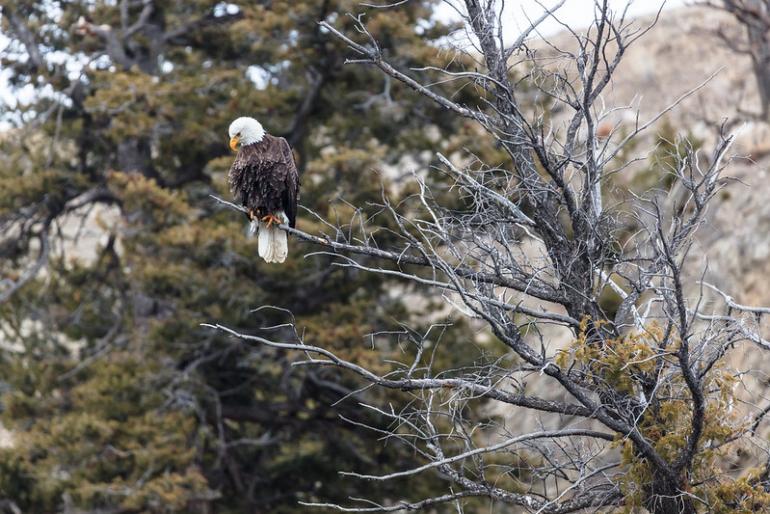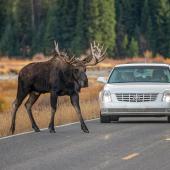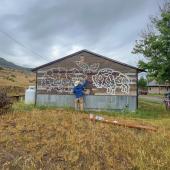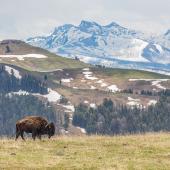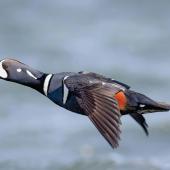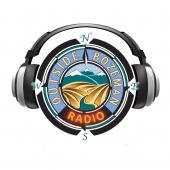Avian Inventory
Birding on the Madison River.
I felt a little out of place without a fly rod.
From May through July last year, most people who sported hip-high waders in the Madison River were angling for a Zen-like trance and the feel of scales on skin. I too tromped and canoed along and across the Madison’s main and braided channels, but I wasn’t casting for fish. Instead, armed with nothing but my waterproof leggings, binoculars, and squeaky-clean ears, I hunted for any and all things “bird.”
My job was to inventory the cottonwood gallery forests and willow stands along a 30-mile stretch of river, from Varney’s Bridge downstream to Ennis Lake. I combed a few public fishing access sites, but most of my cross-country expeditions were on private lands—with express permission from individual landowners, of course.
Riparian habitats like these cottonwoods and willows constitute only a tiny percentage of Montana’s total land area. Still, these oases are some of the hottest spots for birds looking to breed. Roughly 50 to 60 percent of all land birds that breed in Montana “do it” in areas along rivers and streams.
Rising before sunrise each day, I commended myself for going to bed while others were playing in the extended daylight of the season. By 6:00 am I was on the periphery of the Madison and nearby creeks noting anything that twittered, warbled, or squawked. I surveyed one of 15 sites per day on a rotating schedule, visiting each site three times throughout the season. Typically, I walked the five- to six-mile length of the site, being careful not to spook large herds of grazing cattle—always motivated by the thought that I might encounter a species of “conservation priority” in Montana. The rugged beauty of the Gravellys, Tobacco Roots, and the Madison Range as a backdrop didn’t hurt, either. For those sites requiring the crossing of big water, I enlisted the invaluable help of willing canoe captains.
The river and adjacent habitats yielded a veritable avian rainbow of Red-Naped Sapsuckers, Cinnamon Teals, Yellow Warblers, Gray Catbirds, Great Blue Herons, and Violet-Green Swallows. Alerted by the distinct sounds of territorial males or a newly hatched family, I often came face to face with American Goldfinches, Black-headed Grosbeaks, Bullock’s Orioles, Cedar Waxwings, House Wrens, Song Sparrows, and Warbling Vireos, to name a few. Weeks of study coupled with experience in the field enabled me to identify most species by ear alone. Though, in the case of the stealth-flying Great Horned Owl, I was all eyes.
More common birdsongs receded to background noise as I pursued my main quest—to document nesting pairs of species that are considered to be a “conservation priority” in Montana. This list includes Bald Eagles, Ferruginous Hawks, Red-Naped Sapsuckers, Willow Flycatchers, Cordilleran Flycatchers, Veeries, Lazuli Buntings, American Redstarts, and Northern Waterthrushes.
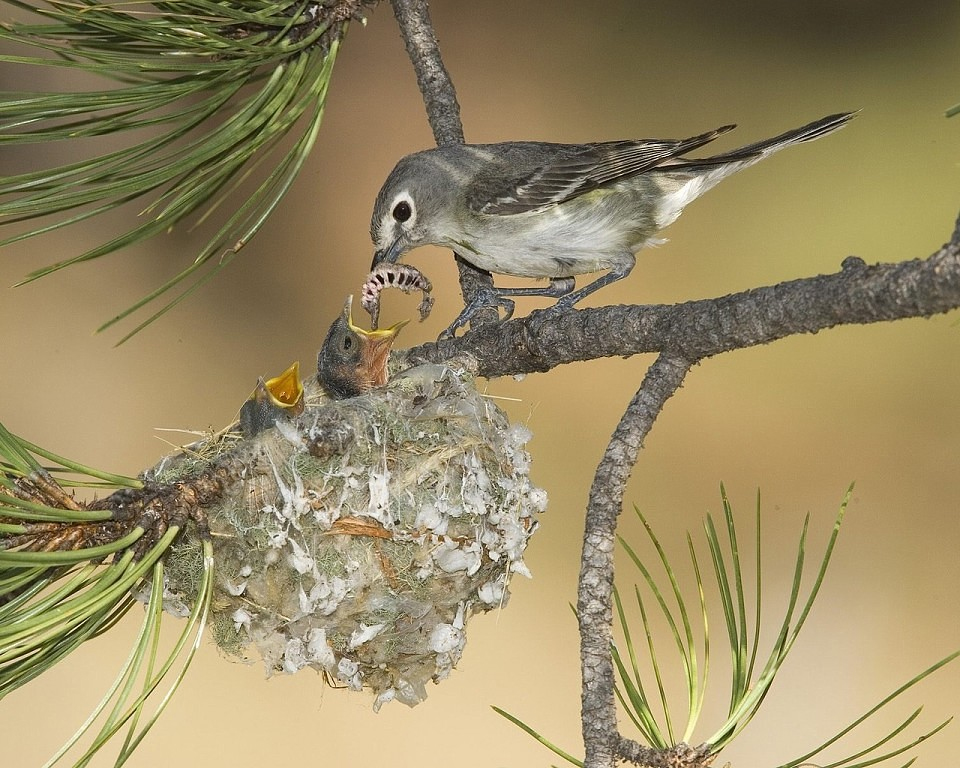
On rare occasions, I stumbled upon the animated (and quite handsome, I might add) American Redstart in the most intact patches of habitat. It was always a thrill to hear the melodic, flute-like song of the virtually invisible Veery or the raspy command of the Mafioso-impersonating Willow Flycatcher. The latter is purported to sing “fitz pew” but I swear these characters were impatiently demanding an answer to the non-sequitur “Where’s the banana? Where’s the banana?” I could muster no fitting answer.
Not a day went by without encountering the common residents of the river’s edge: Red-Winged Blackbirds, Black-Capped Chickadees and Northern Flickers, and, regrettably, the invasive European Starling. On the flip side, I never met the pervasive, non-native and, quite frankly, musically-challenged House Sparrow while visiting any of my sites. Several times, I spotted a nest of the Common Yellowthroat, a warbler who travels all the way from Mexico to reproduce, just to realize that the nestling inside was a fast-growing parasite: the Brown-headed Cowbird. And, through it all, the Black-Billed Magpie was my constant companion.
Always aware that I was sharing the terrain with a much larger and wilder animal than myself—the moose—I still made conscientious circles and hatch marks on my data sheet for five hours at a stretch. By season’s end, I had logged an impressive 115 bird species, about 46 percent of the approximately 250 species of breeding birds Montana hosts each year.
The data I collected is part of a collaborative project between Montana Audubon, Madison Valley Ranchlands Group, Bozeman’s own Sacajawea Audubon Society, Rio Tinto-BirdLife International, and Luzenac America. This avian inventory was designed to help assess the riparian and lake habitats in the Madison Valley for the purpose of biodiversity conservation. The two-year study is now complete and a formal proposal for designating the Madison River as an Important Bird Area is underway.
What the future holds for the birds of the Madison I do not know, but I can say birding there was one helluva a way to spend the summer.
Birding Hotspots
One of the best things about birding is that you can do it almost anywhere. But not all places are created equal, in a bird’s-eye view. Luckily, Montana Audubon and Sacajawea Audubon Society has published a nifty pocket-sized guide, Birding Hotspots of the Gallatin Valley by John E. Parker, to help you focus your next bird search.
Parker describes 11 of the best birding spots within an hour from downtown—and gives you easy-to-follow directions to get there. Better yet, he highlights the species you’re likely to find at each spot. Interested in warblers and other migrants? Check out our friendly neighborhood Lindley Park or Sourdough Nature Trail. Prefer the open country? Cruise Three Forks’ Old Town Road in search of Sage Thrashers and Brewer’s Sparrows.
The coolest feature of Birding Hotspots is that it includes a checklist of all the bird species of the Bozeman area, including a fat side note on rare “accidentals.” Listing the status, seasons of occurrence, and relative abundance of almost 250 species, this inexpensive guide is a must-have companion to your field guide.
To get your copy of the Birding Hotspots of the Gallatin Valley, send a $1 check or money order and a SASE to Sacajawea Audubon Society, P.O. 1711, Bozeman, MT 59771-1711. For more information about other birding resources, meetings, events, and educational efforts, check out sacajaweaaudubon.org.


